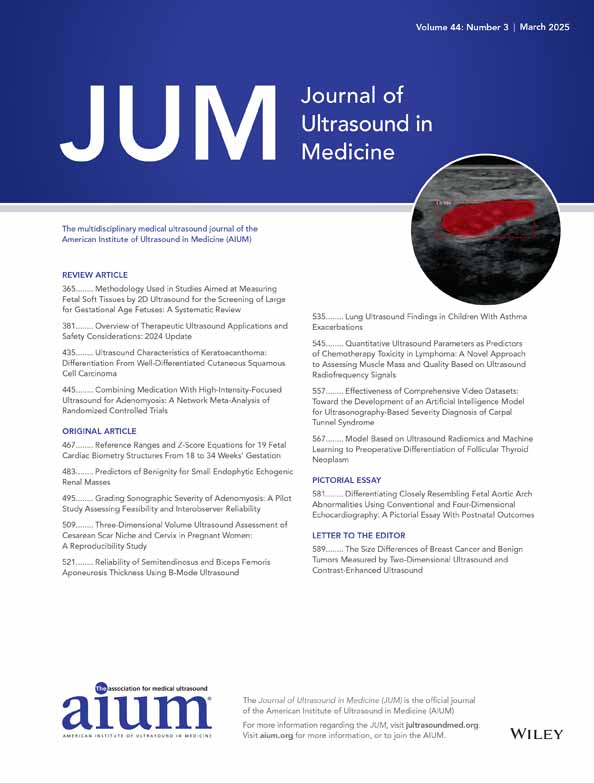Model Based on Ultrasound Radiomics and Machine Learning to Preoperative Differentiation of Follicular Thyroid Neoplasm
Yiwen Deng and Qiao Zeng contributed equally to this work and shared first authorship.
This study was supported by the Technical Research Fund of Jiangxi Provincial Health Commission Department (202410230) and the Key Project of Jiangxi Province Science and Technology Department (20223BBG71005).
The authors have no conflicts of interest to disclose.
Abstract
Objectives
To evaluate the value of radiomics based on ultrasonography in differentiating follicular thyroid carcinoma (FTC) and follicular thyroid adenoma (FTA) and construct a tool for preoperative noninvasive predicting FTC and FTA.
Methods
The clinical data and ultrasound images of 389 patients diagnosed with FTC or FTA postoperatively were retrospectively analyzed at 3 institutions from January 2017 to December 2023. Patients in our hospital were randomly assigned in a 7:3 ratio to training cohort and validation cohort. External test cohort consisted of data collected from other 2 hospitals. Radiomics features were used to develop models based on different machine learning classifiers. A combined model was developed combining radiomics features with clinical characteristics and a nomogram was depicted. The performance of the models was assessed by area under the receiver operating characteristic curve (AUC), calibration curve and decision curve.
Results
Radiomics model based on random forest showed best performance in discriminating FTC and FTA, with AUCs 0.880 (95% confidence interval [CI]: 0.8290–0.9308), 0.871 (95% CI: 0.7690–0.9734), and 0.821 (95% CI: 0.7036–0.9389) in training, validation, and test cohort, respectively. The combined model presented better efficacy comparing with clinical model and radiomics model, with AUCs 0.883 (95% CI: 0.8359–0.9295), 0.874 (95% CI: 0.7873–0.9615), and 0.876 (0.7809–0.9714) in training, validation, and test cohort, respectively. The calibration curves suggested good consistency and decision curves showed the highest overall clinical benefit for the combined model.
Conclusions
Ultrasound radiomics model based on random forest is feasible to differentiate FTC and FTA, and the combined model is an intuitively noninvasive tool for FTC and FTA preoperative identification.
Open Research
Data Availability Statement
The data that support the findings of this study are available on request from the corresponding author. The data are not publicly available due to privacy or ethical restrictions.




